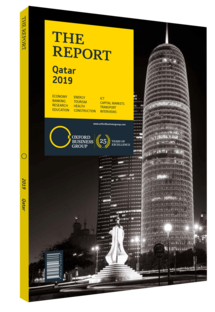Raghavan Seetharaman, CEO, Doha Bank: Interview

Interview: Raghavan Seetharaman, CEO, Doha Bank
What potential do you see for a consolidation in the banking market in the short to medium term?
RAGHAVAN SEETHARAMAN: With approximately 2.7m inhabitants, Qatar only has a small bankable population, meaning that consolidation in the banking sector has been an evolving discussion. There is a high level of competition in the market, and it is widely seen as overbanked. As a result, banks require considerable collaboration to sustain their credibility, ensure their long-term presence in the market and perform in line with their potential. Although there is no immediate pressure on banks to consolidate as long as they retain a sizeable market share and continue to serve their stakeholders, we must redefine the sustainability of the local banking sector. Scalability will be a must in this regard. This is not linked to the operational efficiency of individual banks, but is instead a response to the changing dynamics within the market and especially Qatar. Banks across the region will need to consolidate in order to adapt to digital technologies and a changing regulatory environment given the new capital adequacy rules and moves to comply with the International Financial Reporting Standard 9 and global accounting standards. This regulatory realignment will put pressure on profitability, and although banks can target new opportunities – including contract financing in the hydrocarbons, real estate and services sectors – the market will need strong, large-scale operators to be commercially sustainable.
In what ways are technological disruptions influencing the growth strategies of local banks?
SEETHARAMAN: The digital technologies of the fourth industrial revolution, such as blockchain, robotics and artificial intelligence, are redefining sectors from health care to banking and reshaping the way people live, work and relate to one another. As these tools empower our customers, there is an increased focus on providing them with convenient services that are not restricted by time or location. Banks will need to redefine their business models and manage their various clients, regulators and shareholders. This transformation is not limited to the retail banking segment, but will affect every area of the industry from corporate banking to treasury investments and trade. In order to remain competitive, banks must rethink their products and services for an increasingly mobile customer base, particularly in a country that has some of the highest smartphone and internet penetration rates in the world, as well as a growing e-commerce retail market. Corporate customers, particularly small and medium-sized enterprises, are looking for cost-effective offerings that are more aligned with their unique requirements, such as accounting services and realtime online access. However, these opportunities come with challenges: banks will need to measure, manage and control the vulnerabilities presented by a growing reliance on digital systems and mobile banking. These tools are also susceptible to cyberthreats, so banks globally will need to proactively implement reliable security infrastructure. This will include compliance with the security policies and procedures that are recommended by international experts, as well as the sharing of best practices between countries.
Have banks responded to tightening liquidity by further developing the secondary market for debt?
SEETHARAMAN: Liquidity has improved since the beginning of 2018, driven by a change in sentiment after Qatar’s sovereign bond issue, an oil price increase, public issuances by other banks and Fitch’s upgrade of the country’s outlook. Sovereign debt is actively traded in the secondary market, and bonds continue to see high demand from domestic and international investors, as they represent compelling opportunities. Bonds are trading at a premium over their issuance levels, which has increased secondary trading volumes and, in turn, tightened the credit spreads on these bonds.
You have reached the limit of premium articles you can view for free.
Choose from the options below to purchase print or digital editions of our Reports. You can also purchase a website subscription giving you unlimited access to all of our Reports online for 12 months.
If you have already purchased this Report or have a website subscription, please login to continue.

